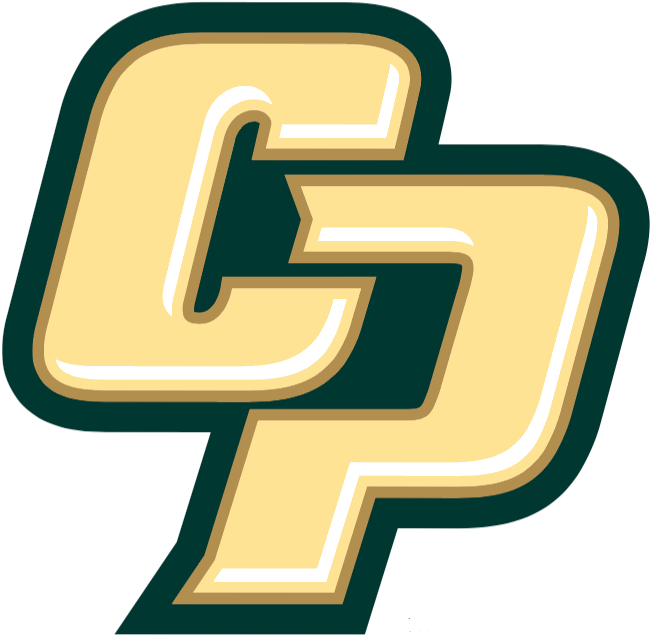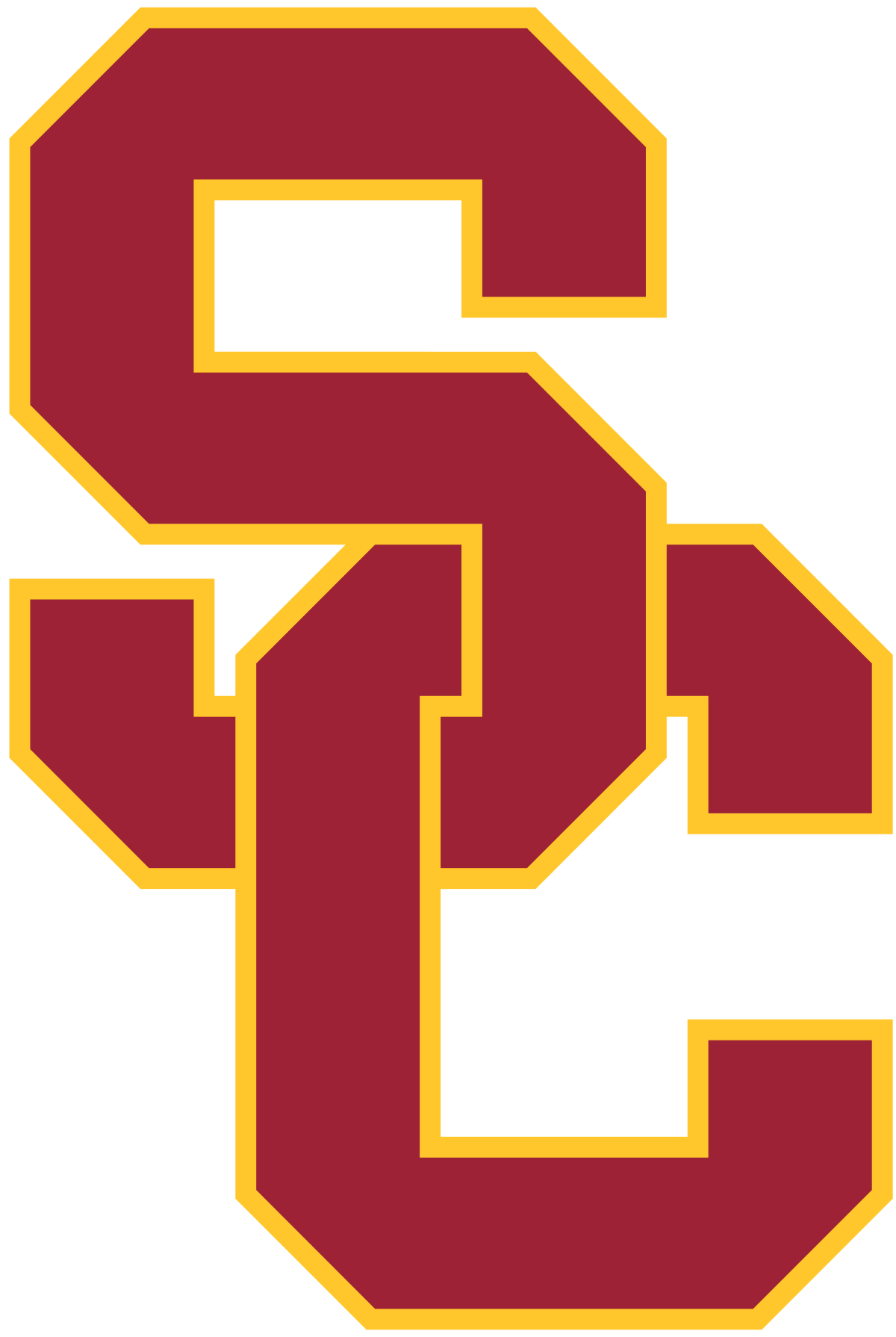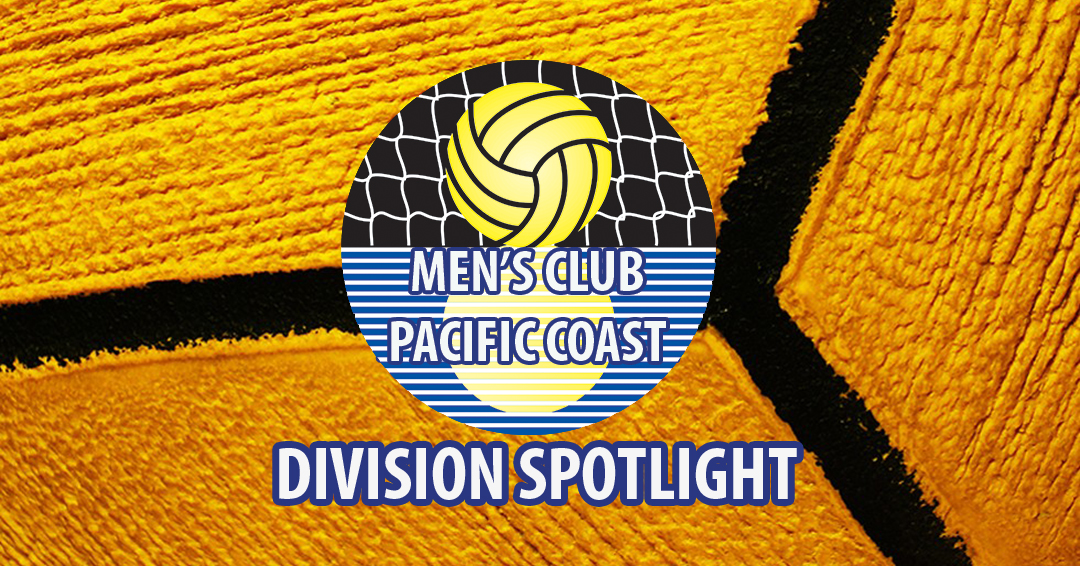BRIDGEPORT, Pa. — The Collegiate Water Polo Association (CWPA) Men’s Collegiate Club Spotlight focuses on the Pacific Coast Division of California Polytechnic State University “A”, California Polytechnic State University “B”, California State University-Long Beach (Long Beach State), the University of California-Los Angeles, the University of California-Santa Barbara “A”, the University of California-Santa Barbara “B” and the University of Southern California.
HISTORY: Formed in 1998 to comprise all men’s collegiate club teams in the State of California, the Pacific Coast Division has experienced some changes over the group’s 22-year history.
Due to the creation of the Sierra Pacific Division in 2011 for Northern California institutions along with the reorganization of the Southwest Division in 2015 to create a more geographically-friendly group for the San Diego-area schools, the Pacific Coast membership has adjusted over time to its 2019 line-up of Cal Poly “A”, Cal Poly “B”, Long Beach State, UCLA, UC-Santa Barbara “A”, UC-Santa Barbara “B” and USC.
Cal Poly has been the dominant team throughout the 22-years of Pacific Coast Division action as the Mustangs hold 10 titles (1998, 2000, 2001, 2002, 2003, 2004, 2006, 2007, 2008, 2018) and five runner-up finishes (1999, 2005 2014, 2016, 2017). UCLA is second on the list for most title game appearances behind Cal Poly’s 15 as the Bruins claimed five championships (2005, 2009, 2010, 2012, 2013) and notched second place marks three times (2003, 2008, 2018).
Defending division champion USC has trios of titles (2011, 2017, 2019) and runner-up placements (2001, 2002, 2012), while Long Beach State picked up back-to-back crowns in 2015 and 2016. Further, UC-Santa Barbara has finished second three times (2010, 2015, 2019) to complete the active Pacific Coast schools that have appeared in the division’s championship game.
The remaining two Pacific Coast Division titles belong to former members as current varsity team California Baptist University (1999) and Southwest Division program San Diego State University (2014) picked up the big plaque during their tenure’s in the division.
A slew of current Sierra Pacific and Southwest Division schools recorded runner-up finishes while members of the Pacific Coast as California State University-Chico (1998; Sierra Pacific), California State University-Fresno (2000, 2004; Sierra Pacific), the University of California-Davis (2006, 2007; Sierra Pacific), the University of California (2009; Sierra Pacific), San Diego State (2013; Southwest) and the University of California-San Diego (2011; Southwest) fell in the title game.
On the national level, the Pacific Coast Division is by far the most successful division with 10 Men’s National Collegiate Club Championships in 15 title game appearances.
Leading the charge is Cal Poly as the Mustangs reeled off five national titles (1999, 2001, 2002, 2004, 2007) and a pair of second place finishes (2003, 2008). UCLA added three crowns (2009, 2010, 2013) in a trio of tries, while USC is coming off a runner-up finish at the 2019 Men’s National Collegiate Club Championship hosted by the University of Pittsburgh following back-to-back titles in 2011 and 2012.
Long Beach State (2016) and current Southwest Division member San Diego State (2014) – which left for the Southwest Division and appeared in the 2015 Men’s National Collegiate Club Championship game – round out the previous title game appearances by member schools.
Overall, the eight-year run of National Championship game appearances by Pacific Coast Division schools spanning 2007-to-2014 marks the longest streak of title game appearances by any division in the history of men’s collegiate club championship competition.
Pacific Coast Division Champion/Runner-Up
- 1998 – California Polytechnic State University / California State University-Chico
- 1999 – California Baptist University / California Polytechnic State University
- 2000 – California Polytechnic State University / Fresno State University
- 2001 – California Polytechnic State University / University of Southern California
- 2002 – California Polytechnic State University / University of Southern California
- 2003 – California Polytechnic State University / University of California-Los Angeles
- 2004 – California Polytechnic State University / Fresno State University
- 2005 – University of California-Los Angeles / California Polytechnic State University
- 2006 – California Polytechnic State University / University of California-Davis
- 2007 – California Polytechnic State University / University of California-Davis
- 2008 – California Polytechnic State University / University of California-Los Angeles
- 2009 – University of California-Los Angeles / University of California
- 2010 – University of California-Los Angeles / University of California-Santa Barbara
- 2011 – University of Southern California / University of California-San Diego
- 2012 – University of California-Los Angeles / University of Southern California
- 2013 – University of California-Los Angeles / San Diego State University
- 2014 – San Diego State University / California Polytechnic State University
- 2015 – Long Beach State University / University of California-Santa Barbara
- 2016 – Long Beach State University / California Polytechnic State University
- 2017 – University of Southern California / California Polytechnic State University
- 2018 – California Polytechnic State University / University of California-Los Angeles
- 2019 – University of Southern California / University of California-Santa Barbara
National Collegiate Club Champion/Runner-Up
- 1999 – California Polytechnic State University / University of Richmond
- 2001 – California Polytechnic State University / Villanova University
- 2002 – California Polytechnic State University / University of Southern California
- 2003 – University of Michigan / California Polytechnic State University
- 2004 – California Polytechnic State University / University of Arizona
- 2007 – California Polytechnic State University / Michigan State University
- 2008 – Michigan State University / California Polytechnic State University
- 2009 – University of California-Los Angeles / Florida International University
- 2010 – University of California-Los Angeles / University of Texas
- 2011 – University of Southern California / Yale University
- 2012 – University of Southern California / University of California
- 2013 – University of California-Los Angeles / Lindenwood University
- 2014 – Lindenwood University / San Diego State University
- 2016 – Lindenwood University / Long Beach State University
- 2019 – Lindenwood University / University of Southern California
THE TEAMS: One of three divisions serving institutions in the State of California, the Pacific Coast Division covers a geographic footprint of 208 miles in California from the Northern-most institution (Cal Poly) in San Luis Obispo to the Southern-most school (Long Beach State) in Long Beach, Calif.
 California Polytechnic State University
California Polytechnic State University
The most successful program in both Pacific Coast Division and Men’s National Collegiate Club Championship history, the Mustangs of California Polytechnic State University rate at the peak of the sport.
A five-time National Champion (1999, 2001, 2002, 2004, 2007) and two-time runner-up (2003, 2008), Cal Poly has achieved 10 division crowns (1998, 2000, 2001, 2002, 2003, 2004, 2006, 2007, 2008, 2018) and five second place finishes (1999, 2005, 2014, 2016, 2017).
Overall, Cal Poly has appeared in 15-of-22 Pacific Coast Division title games in addition to competing in a third of the Men’s National Collegiate Club Championship games since the program’s first appearance in 1999 (seven-of-21).
Located in San Luis Obispo, Calif., and fielding both “A” and “B” teams in the Pacific Coast Division during the 2019 season, the public university is organized into six colleges offering 65 bachelor’s and 39 master’s degrees. Cal Poly San Luis Obispo primarily focuses on undergraduate education and as of fall 2018 Cal Poly has 21,037 undergraduate and 775 graduate students. The academic focus is fostering a comprehensive undergraduate education, combining technical and professional curricula with the arts and humanities.
Cal Poly has one of the largest college campuses in the United States. It owns 9,178 acres and is the second largest land-holding university in California. The lands are used for student education and include the main campus, two nearby agricultural lands, and two properties in Santa Cruz County. Part of the Cal Poly property is the Swanton Pacific Ranch, a 3,200-acre (1,300 ha) ranch located in Santa Cruz County, California, outside the town of Davenport. The ranch provides educational and research opportunities, encompasses rangeland, livestock, and forestry operations for the College of Agriculture, Food, and Environmental sciences, and fosters Cal Poly’s Learn by Doing teaching philosophy of with emphasis on sustainable management of agricultural practices with a mix of laboratory experiments.
All undergraduate students at Cal Poly are required to complete a senior project. The senior project is intended to be a capstone experience for students receiving a baccalaureate degree by integrating theory and application from across a student’s undergraduate educational experiences. The senior project consists of one or more of the following: a design or construction experience, an experiment, a self-guided study or research project, a presentation, a report based on internship, co-op, or service learning experience, and/or a public portfolio display or performance. Senior projects have often led to students obtaining jobs or recognition for their work. In July 2011, a company created from a Senior Project, Punchd, was acquired by Google. Jamba Juice, founded as “Juice Club”, was inspired by the Senior Project idea, but was founded after the founders had graduated.
For the class entering Fall 2019, 15,366 freshmen were accepted out of 54,072 applicants, a 28.4% acceptance rate, and 4,613 enrolled. Women constituted 50.5% of the incoming freshmen class, men 49.5%.
For Fall 2019 admitted transfer students, Cal Poly accepted 1,622 of 11,109 applicants, a 14.6% acceptance rate.
Cal Poly requires students to declare a major when applying for admission, and the university then admits the most competitive applicants within each major based on GPA and SAT or ACT scores. As a result, changing majors at the university is not guaranteed. Each major has a specific change of major plan which includes required classes to be taken while maintaining a certain GPA (usually between 2.5–2.75) in order to be considered as a candidate. In some cases, students wishing to change majors transfer to other universities.
The Cal Poly Master Plan calls to increase student population from approximately 17,000 students to 20,900 students by the year 2020–2021.
For more information on Cal Poly men’s collegiate club team, contact either Joseph Secard (jsecard@calpoly.edu) or Harrison Woods (hwoods@calpoly.edu).
- Facebook (@CalPolyMensClubWaterPolo)
- Instagram (@calpolymenspolo)
- Website (www.uclaclubsports.com/sports/mens-water-polo)
California State University-Long Beach (Long Beach State)
A two-time Pacific Coast Division Champion with titles in 2015 and 2016, the 2016 Men’s National Collegiate Club Championship runner-up 49ers of California State University-Long Beach – more widely known as Long Beach State – have been among the top teams in the division over the past five years.
A public university in Long Beach, California, Long Beach State’s 322-acre campus is the third largest of the 23-school California State University system and one of the largest universities in the state of California by enrollment, its student body numbering 37,776. The school has a 28% acceptance rate. With 5,286 graduate students, the university enrolls one of the largest graduate student populations across the CSU system and in the state of California.
The university is located in the Los Altos neighborhood of Long Beach at the southeastern coastal tip of Los Angeles County, less than one mile from the border with Orange County. The university offers 82 different Bachelor’s degrees, 65 types of Master’s degrees, and four Doctoral degrees.
“The Beach” is one of the West Coast’s top universities in terms of student body racial diversity, being named the fifth most diverse university in the West by U.S. News & World Report. It is also home to one of the largest publicly funded art schools in the United States. The university currently operates with one of the lowest student tuition rate in the country, at $6,420 per year for full-time students with California residence.
With nearly 4,000 students, CSULB is home to the largest Physics Department at any university in the State of California, inching past the University of California-Berkeley, the University of California-San Diego and California Polytechnic State University. Additionally, the graduate physics program is the largest non-Ph.D. granting program in the United States. The graduate program in Philosophy is recognized as being among the top terminal MA programs in the nation (and out of nearly 200 world-wide). Long Beach’s College of the Arts has more art and design majors than any other public university in America. CSU Long Beach also produces the most master of science in nursing (MSN) graduates in the 23-campus CSU system. U.S. News & World Report has repeatedly ranked the school;s engineering program as one of the Top 50 undergraduate programs in the nation (amongst master’s level universities). In addition, according to the National Science Foundation, CSULB is the top campus in the nation among Master’s level-granting universities for producing students who go on to earn doctoral degrees in the sciences.
In 2011, a new $105 million “Hall of Science” facility opened which has offices and labs for members of the biology, biochemistry and chemistry, geology, physics and science education departments. This building also houses a hands-on museum for children, a large salt water marine biology lab and has a greenhouse facility and observatory on the roof.
For more information on Long Beach State men’s collegiate club team, contact either Kai Kirsch (kai.kirsch@student.csulb.edu) or Dean Frizzell (dean.frizzell@student.csulb.edu).
- Facebook (@beachclubwaterpolo)
- Website (http://web.csulb.edu/divisions/students/clubsports/club_sports/teams.htm)
 University of California-Los Angeles
University of California-Los Angeles
A three-time National Champion (2009, 2010, 2013), the Bruins of the University of California-Los Angeles (UCLA) have a long rivalry with both California Polytechnic State University and the University of Southern California.
A five-time division champion (2005, 2009, 2010, 2012, 2013) with a trio of second place finishes (2003, 2008, 2018), UCLA has faced Cal Poly for the Pacific Coast title four times (2003, 2005, 2008, 2018) and USC (2012) once. In addition, UCLA has also taken on the University of California-Santa Barbara (2010) along with former Pacific Coast Division members the University of California (2009) and San Diego State University (2013) with a berth to the Men’s National Collegiate Club Championship on the line.
Led by seniors Ryker Dacus and Art Mheryan, juniors Luke Peterson and Giorgio Fatica, along with sophomores Jackson Lawrence and Preston Burke, UCLA enters each season with the same goal – win the Pacific Coast Division title and claim the program’s next national championship.
“UCLA has given me an opportunity to continue playing the sport I love and making lifelong friends,” notes Jackson Lieberg. “I love it in LA as its perfect polo weather year round.”
A public research university in Los Angeles. UCLA traces its early origins back to 1882 as the southern branch of the California State Normal School (now San Jose State University). It became the Southern Branch of the University of California in 1919, making it the second-oldest (after the University of California-Berkeley) of the 10-campus University of California system and oldest of the campuses in Southern California. It offers 337 undergraduate and graduate degree programs in a wide range of disciplines.
UCLA enrolls about 31,500 undergraduate and 12,800 graduate students as the school rates as the most applied-to of any American university. Due to this – combined with the institution’s academic programs – US News & World Report named UCLA the best public university in the United States for 2019.
The university is organized into six undergraduate colleges, seven professional schools, and four professional health science schools. The undergraduate colleges are the College of Letters and Science; Samueli School of Engineering; School of the Arts and Architecture; Herb Alpert School of Music; School of Theater, Film and Television; and School of Nursing.
As of 2017, 24 Nobel laureates, three Fields Medalists, and five Turing Award winners, and two Chief Scientists of the U.S. Air Force have been affiliated with UCLA as faculty, researchers, or alumni. Among the current faculty members, 55 have been elected to the National Academy of Sciences, 28 to the National Academy of Engineering, 39 to the Institute of Medicine, and 124 to the American Academy of Arts and Sciences.
Admission rates for UCLA applicants vary according to the residency of the individual. For Fall 2019, California residents had an admission rate of 12.0%, while out-of-state U.S. residents had an admission rate of 16.4% and internationals had an admission rate of 8.4%. UCLA’s overall freshman admit rate for the Fall 2019 term was 12.3%.
Medical school applicants should take note that according to the Association of American Medical Colleges (AAMC), UCLA supplies the most undergraduate applicants to U.S. medical schools among all American universities. Among first-time medical school applicants who received their bachelor’s degree from UCLA, 51% were admitted to at least one U.S. medical school.
For more information on UCLA men’s collegiate club team, contact either Jackson Lieberg (jackson.lieberg@gmail.com) or Johnathon Henderson (Sweetjohn33@gmail.com).
- Facebook (@uclamensclubwaterpolo)
- Instagram (@uclaclubpolo)
- Website (https://uclaclubsports.com/sports/mens-water-polo)
University of California-Santa Barbara
A three-time Pacific Coast Division runner-up (2010, 2015, 2019), the University of California-Santa Barbara seeks the program’s inaugural division championship.
A public research university in Santa Barbara, Calif., the school fielded both “A” and “B” teams in the Collegiate Water Polo Association (CWPA) during the 2019 season.
One of the 10 campuses of the University of California system, the school traces its roots back to 1891 as an independent teachers’ college. UCSB joined the University of California system in 1944 and is the third-oldest general-education campus in the system. Originally, the regents envisioned a small, several thousand–student liberal arts college, a so-called “Williams College of the West”, at Santa Barbara. However, the school has nearly 23,500 undergraduates and 3,000 graduate students – substantially larger than the topic liberal arts institution.
The university is a comprehensive doctoral university and is organized into five colleges and schools offering 87 undergraduate degrees and 55 graduate degrees.
UC-Santa Barbara is a research university with 10 national research centers, including the Kavli Institute for Theoretical Physics and the Center for Control, Dynamical-Systems and Computation. In the United States National Research Council rankings of graduate programs, 10 UCSB departments are ranked in the Top 10 in the country: Materials, Chemical Engineering, Computer Science, Electrical and Computer Engineering, Mechanical Engineering, Physics, Marine Science Institute, Geography, History and Theater and Dance.
The university runs on a quarter system. There are three terms in the normal academic year: fall, winter, and spring, as well as a summer term. At the beginning of each term, there are one to three days of pre-instructional activities, where faculty meet to discuss instructional plans. During this period, students acquaint themselves to the campus and have the opportunity to take placement tests. At the end of each term, one week is devoted to final exams and special academic activities. There are 146 days of instruction, with a minimum of 48 per term.
Surfing also draws many students to UCSB. The on-campus beaches include a number of decent surfing sites, including “Poles,” “Campus Point,” “Depressions” and “Sands” and “Devereaux Point” on West Campus. Because Campus Beach actually faces south and east, and is shielded by the Santa Barbara Channel Islands, the surf is usually quite small. However, a large north or west swell can wrap in to create great waves that are typically very clean and good for surfing.
For more information on UC-Santa Barbara men’s collegiate club team, contact either Brian Kent (bdkent12@gmail.com) or Jeremy Baker (ucsbmensclubpolo@gmail.com).
- Facebook (@ucsbmenswaterpoloclub)
 University of Southern California
University of Southern California
A three-time champion (2011, 2017, 2019) and runner-up (2001, 2002, 2012) in the Pacific Coast Division, the Trojans of the University of Southern California are coming off the program’s third Men’s National Collegiate Club Championship title game appearance.
The 2011 and 2012 National Champion, USC fell in the 2019 Men’s National Collegiate Club Championship title game against Lindenwood University at the University of Pittsburgh. However, the Trojans return the majority of their line-up and are primed to make another run at the Pacific Coast Division and National Championships in 2020 and beyond.
USC shares a unique position in the history of men’s club water polo as the Trojans captured the 2012 National Championship by topping the University of California – but did not win the division championship that year. Rather, UCLA downed USC in the Pacific Coast Division title game – but the Trojans earned a spot in the Men’s National Collegiate Club Championship field and went the distance. It marked the second time a runner-up claimed the National Championship without winning its division – a feat first achieved by fellow Pacific Coast Division institution California Polytechnic State University which fell to California Baptist University in the division title game prior to earning a berth to Nationals and striking down the University of Richmond for the 1999 National Championship.
The Trojans hold another unique position in the Pacific Coast Division as USC is the only private university in the group.
A private research university in Los Angeles, Calif., USC was founded in 1880 and stands as the oldest private research university in California. With 20,000 students enrolled in four-year undergraduate programs, USC also has 27,500 graduate and professional students in a number of different programs, including business, law, engineering, social work, occupational therapy, pharmacy, and medicine.
A total of 95 undergraduate majors and 147 academic and professional minors are offered, while the graduate program offers 134 master’s, doctoral, and professional degrees through 17 professional schools.
Nearly 60,000 students applied for admission to the undergraduate class entering in 2020, with 16% being admitted. Twenty percent of admitted and attending students are SCions, or students with familial ties to USC, while 14 percent are the first generation in their family to attend any form of college. Twenty-four percent of undergraduates at USC are Pell Grant-eligible, which is defined by having come from a family household income of less than $50,000.
Why are the school’s teams called Trojans, epitomized by the Trojan Shrine, nicknamed “Tommy Trojan”, near the center of campus. Until 1912, USC students (especially athletes) were known as Fighting Methodists or Wesleyans, though neither name was approved by the university. During a fateful track and field meet with Stanford University, the USC team was beaten early and seemingly conclusively. After only the first few events, it seemed implausible USC would ever win; however, the team fought back, winning many of the later events, to lose only by a slight margin. After this contest, Los Angeles Times sportswriter Owen Bird reported the USC athletes “fought on like the Trojans of antiquity”, and the president of the university at the time, George F. Bovard, approved the name officially.
The largest private employer in the city of Los Angeles, USC has graduated more alumni who have gone on to win an Academy Award than any other institution in the world by a significant margin. USC alumni have also played crucial roles in 21 of the top 25 highest-grossing films of all time, as of 2019.
For more information on USC men’s collegiate club team, contact Mitch Fargo (uscwaterpoloclub@gmail.com).
- Instagram (@uscclubwopo)
- Website (https://clubwaterpoloatusc.weebly.com/)

